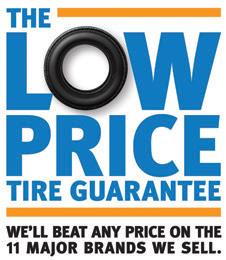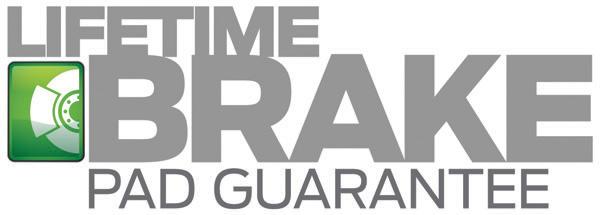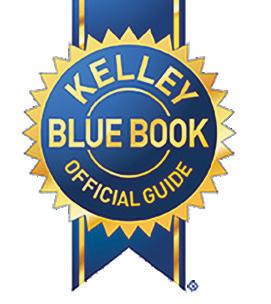THE PRESS AUTO GUIDE
Fender Bender
What to do after a car accident
Low Inventory
Scarcity leads to the rising cost of cars
Trade-In
Improving your car’s resale value












Fender Bender
What to do after a car accident
Low Inventory
Scarcity leads to the rising cost of cars
Trade-In
Improving your car’s resale value












Car accidents occur every day. According to data from the National Highway Traffic Safety Administration, there are more than five million car accidents in the United States every year with 43% of car accidents resulting in injuries in 2020.

No one wants to get into an automobile accident, which can be stressful and even fatal. Even accidents that do not result in any major injuries can be traumatizing. Knowing what to do in the immediate aftermath of an accident may make such instances less stressful.
The insurance experts at GEICO advise individuals involved in an accident to first determine if anyon was hurt. If you are injured, stay put. If not, check on the condition of the other driver. At this point, do not admit any fault or reveal any policy limits.
Next, make a call to emergency services to request assistance from the police and an ambulance, if necessary.


If possible, pull the vehicle over to a safe, well-lit public location. This is especially important if you believe you were the victim of a staged accident, says the Insurance Information Institute.
Have the police write up an accident report. You should take pictures of the damage to your vehicle, the other vehicle, if possible, and the scene of the accident, including any skid marks, debris and/or property damage. If there are any witnesses to the accident, get their names and contact information. You’ll need this information when filing an insurance claim.
Collect the names, phone numbers, addresses and email addresses of other drivers and vehicle occupants and exchange insurance information with all drivers involved. That includes the insurance company name, policy number and the name of the insured.

If the car will cause another road hazard, it is best to move it over to the side and use flashers to alert oncoming traffic. It is important that you don’t leave the scene, according to the American Property Casualty Insurance Association.
Even if the accident is not serious, you may want to call a friend or family member to provide emotional support. If you’ve been injured, a friend or family member can meet you at the hospital and/or arrange to have your vehicle towed or returned home while you get the care you need.
– Courtesy of Metro Creative
Antioch resident Ushean Fernando knew it was time to search for a new car. In November 2021, with his 2011 Toyota Sienna aging and accumulating a lot of miles, while he was increasingly frustrated and concerned with rising gas prices, Fernando soon ventured out to find a deal. Fernando desired a Toyota Hybrid Highlander, Honda Pilot, or a certified used car, but soon became frustrated for another reason.
“I was alarmed, but I didn’t buy at the time,” said Fernando, in reference to the rising prices of used cars. “Car prices skyrocketed. Then, it was jumping up $4,000, then $6,000, then $8,000; $52,000 became $56,000, and then I just gave up. Then people started to get the used cars. Why should I go for a used car when I could just buy a brand-
new car? A lot of people don’t want to bargain with a used car.”
Fernando is one of the many consumers coming to grips with the reality of increased car prices as a result
of a variety of different factors in today’s world. The prices of new cars have risen due to higher production costs, global supply chain problems, as well as a semiconductor (“chip”) shortage, which
stalled new auto production, according to statistics from financial services company J.P. Morgan and data analytics firm J.D. Power.
see Sales page 5B












Data from Auto Forecast Solutions says that when automakers scaled back on auto production in response to the COVID-19 pandemic, chip makers responded by switching gears and shifting shipment of chips to the consumer electronics industry. An estimated 18 million vehicles may be removed from production plans by the end of 2023 since the beginning of the chip shortage. As a result, the ensuing shortage of new cars increased demand for used cars, which, in turn, caused a surge in prices and a 30 percent increase above prepandemic levels as well.
Statistics show that U.S. consumers paid an average of $46,437 for a new vehicle in January 2023; a 4.2 percent increase from January 2022. This increase was on top of a jump of $8,500 from 2021, when the average price for a new vehicle was $37,876, according to Kelley Blue Book.
Eventually, Fernando said he bought a new Tesla, knowing he can get a better interest rate with a new car as opposed to a used car, in addition to saving on gas and having the luxury and comfort of having an electric car and being able to charge it at home.
“The only option for me was to buy a brand-new car,” said Fernando, adding that he has no regrets. “I already prepared my mind before I bought it. But each car is different in how you look at

it. Anything you buy, you should buy to help you in your life.”
Bill Brandt Ford has been in Brentwood for the past 50 years. According to Dealer Principal Rob Brandt, supply has increased with 100 new vehicles; a significantly higher number than just 15 new vehicles a year ago, and monthly new vehicle sales are up 10 percent. Brandt added that while business has been improving with new car sales increasing and being stronger than it was a year ago and even from six to eight months ago, it still pales in comparison before 2020.
“Prices have gone up,” said Brandt. “Prior to 2020, you could always get what you wanted. It’s better than what it was, but not like what it used to be. Supply improves, then goes backwards for three months. It’s the nature of the business.”
Mike Bushel, Internet Manager of Winter Honda in Pittsburg, says business is slower than it was a couple of years ago when they had plenty of inventory, but still remains decent. Bushel added that manufacturers have increased their prices on the new cars due to high rate of inflation caused by COVID-19 pandemic-related and ensuing supply chain problems.
Due to lack of inventory, new car retailers have also increased their dealer markup on the new cars as well.
“Yes, financing has become more




expensive due to the Federal Reserve increasing interest rates last year seven times and one time this year, so it adversely affected mortgage and auto loan interest rates significantly,” said Bushel. “People always need new or preowned vehicles, and we’re an established business doing service to the community for over 60 years in Pittsburg.”
Interest rates remain high with average interest rates increasing to 6.30 percent for a 60-month term on a new car and 6.27 percent for a 48-month term for a new car as of March 1, according to Bankrate.com. Interest rates for a 48-month loan on a used car and 36-month loan on a used car are 6.90 percent and 6.58 percent, respectively.
Due to more new cars being built and the production of more chips in 2023, prices are expected to decline by 10% for used cars and 2.5-5 percent for new cars, although there remains a degree of uncertainty of when or if prices will begin to decrease due to inflation.

“So far, we don’t have many new vehicles in stock and, thus, prices stay exorbitant,” added Bushel. “I don’t have any idea when we will have plenty of new cars from the Honda factory. This has been going on for two years in a row.”
Bushel advisies consumers to communicate with dealers. “That open channel of communications would allow the prospects to weed out bad dealers and select the professionals that they can trust to do business with,” he said.
Further information on vehicles for sale, vehicle ratings, pricing, and values can be found at https://www.jdpower. com or stop by Bill Brandt Ford at 8100 Brentwood Blvd. or call 925-634-3551.
Winter Honda is at 3850 Century Court, Pittsburg or call 925-232-0412.

Prices have gone up. Prior to 2020, you could always get what you wanted. It’s better than what it was, but not like what it used to be. Supply improves, then goes backwards for three months. It’s the nature of the business.
– Rob Brandt, principal at Bill Brandt Ford

Though modern cars and trucks still employ some of the same principles as their forebears, the vehicles people drive today bear little resemblance to those that made waves in the early part of the 20th century.

Modern automobiles are technological marvels, which has made both driving and maintaining a vehicle much simpler. In regard to maintenance, built-in diagnostic systems can now alert drivers when something is wrong with their vehicles. Though that feature is undeniably useful, drivers can still benefit from learning to recognize issues by ear. Many problems that can affect a car or truck produce unusual sounds, and learning what certain noises may indicate can help drivers detect problems as soon as possible. ♦ Rattling sound in a wheel well: Most people have mistakenly placed clothing in a dryer without realizing they had spare change in their pockets. That mistake is immediately apparent once the dryer starts thanks to the unpleasant noise of coins bouncing off the interior of the machine. Drivers may hear a similar sound when behind the wheel and wonder what’s behind it. Such a sound is often indicative that there’s a loose lug nut inside the hubcap. This issue can arise when drivers don’t tighten the wheel properly after changing their own tire, or if mechanics make the same mistake when rotating or replacing tires during a routine maintenance session.
Learning to recognize the culprits behind various vehicle noises can help drivers nip problems in the bud before they compromise the automobile and the safety of the people inside it.

Aging cars may require a little more TLC than vehicles that are right off the dealership lot. But the following are three simple tips that can help drivers keep their cars running longer.

1. Become a more careful driver. A careful approach when behind the wheel is safer than aggressive driving and beneficial for your vehicle. When starting, avoid revving the engine, which needlessly wears it down. When out on the road, avoid rapid accelerations, which also contributes to needless wear and tear. Even excessive idling can harm the engine, so keep winter warm-ups to around 30 seconds to prevent damage to engine components.
Squeaking sound: The auto insurance experts at Geico note that rear-wheel or fourwheel drive vehicles may produce a rhythmic squeaking sound when an issue arises with the universal joint. JD Power notes that the universal joint, often referred to as a U-joint, is part of the system that enables the rotating crankshaft in the engine of a vehicle to transfer that rotating motion to the rear wheels. U-joints get a workout whenever vehicles are driven, so they require maintenance, and a squeaking sound is one indicator that the U-joint needs to be addressed immediately.
♦ Squealing sound: A high-pitched squealing sound is typically indicative of worn out brake pads. However, Cars.com notes that if such a sound is only present when a car is first driven in the morning, it could just be surface rust being scraped off the rotors. After a few initial applications of the brakes, that sound might disappear. If it doesn’t, the vehicle will likely need new brake pads.
♦ Scraping on the windshield during rain: The scraping sound on a windshield when the wipers are in use should not be taken lightly or be interpreted as a sign that the rain is only falling slightly. In fact, that sound indicates the wipers are worn out, which means they’re not effectively clearing the windshield. In addition, the wipers could be scratching the windshield each time they produce this sound, ultimately necessitating a costly windshield replacement. Wiper blades can be replaced in a matter of minutes, so address this issue promptly.
– Courtesy of Metro Creative
2. Know when and how to fill up. Every driver has likely visited a filling station when an oil tanker is busily filling the tanks. That’s traditionally been considered a less than ideal time to fill up, as the theory is that filling the tanks stirs up sediment that could then find its way into consumers’ gas tanks, harming their vehicles. However, that’s often dependent on the station itself and how much its owners prioritize maintenance of the tank and filtration systems. Drivers who trust their local station owners can likely fill up when the tankers are present without worry. In addition, avoid topping off once the nozzle clicks when filling up. The U.S. Environmental Protection Agency notes that topping off is harmful to the planet and the vehicle, as gasoline needs room to expand. When you top off, the extra gas may damage the vapor collection system and cause the vehicle to run less efficiently.
3. Change oil more frequently as the vehicle ages. It’s true that modern vehicles no longer require oil changes for every 3,000 miles driven. However, as vehicles age, drivers and their vehicles’ engines may benefit from more frequent oil changes than the owner’s manual necessarily recommends. Oil changes remove dirt and metal particles from the engine, potentially contributing to a longer life expectancy. More frequent changes can be especially beneficial for vehicles that are routinely driven in stop-and-go traffic.


– Courtesy of Metro Creative


When the time comes to purchase a new vehicle, many drivers explore trading in their existing cars or trucks. Trade-ins can reduce the cost of buying new vehicles and save drivers the hassle of selling their vehicles on their own.
Motorists who think trading in is the best way to unload their current cars can take various steps to improve the trade-in value prior to visiting the dealership.

Some trade-ins may be more valuable than others, even if the cars are relatively similar with regard to mileage. For example, pre-owned vehicle buyers typically prefer late- model vehicles as opposed to cars that are older. This is even more apparent now that many car buyers want smartphone-friendly vehicles that afford them access to the apps and GPS systems on their phones. Drivers who want to get maximum value for their trade-ins may benefit by trading in a year or so earlier
than they initially planned, as this will make their cars or trucks more attractive to prospective buyers, which should make it easier for dealerships to sell the vehicle.
Dealerships will offer to tend to any repairs trade-ins may need. But that will

come at a cost, which will be reflected in the trade-in value of the car. Vehicle owners should address any repairs before taking their vehicles to the dealership. Fix any doors that stick or minor scratches on the vehicle’s exterior, remembering to have the car detailed, washed and waxed. Investigate if any major problems, such as

engine troubles, are worth fixing on your own, or if you’re better off receiving less for your trade-in and letting the dealership address such problems.



Maintenance records illustrating that the vehicle was taken care of can help owners get more for their trade-ins. Drivers who intend to trade the vehicle in to the same dealership where the vehicle was purchased should still keep their own maintenance records to eliminate potential problems as they negotiate the trade-in value of their vehicles.
Drivers who are not satisfied with the trade-in value assigned by a specific dealership can shop around until they find better offers. Some dealerships may not offer much for a vehicle because they already have a similar car or truck sitting on their lot, while others may jump at the chance to make their pre-owned inventory more diverse. Exercise patience when shopping around to reduce any frustration that might develop during the negotiation process.


– Courtesy of Metro Creative























